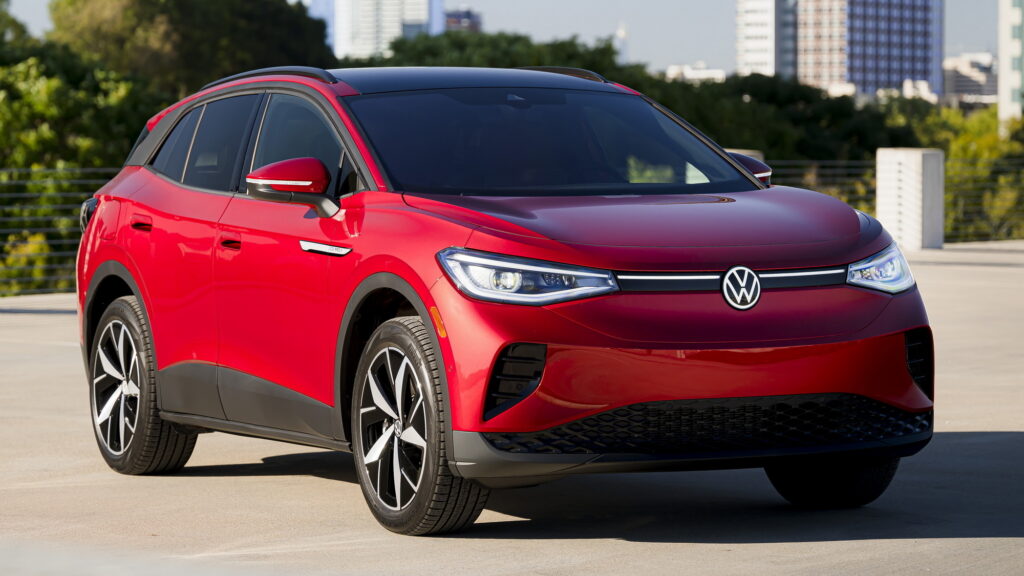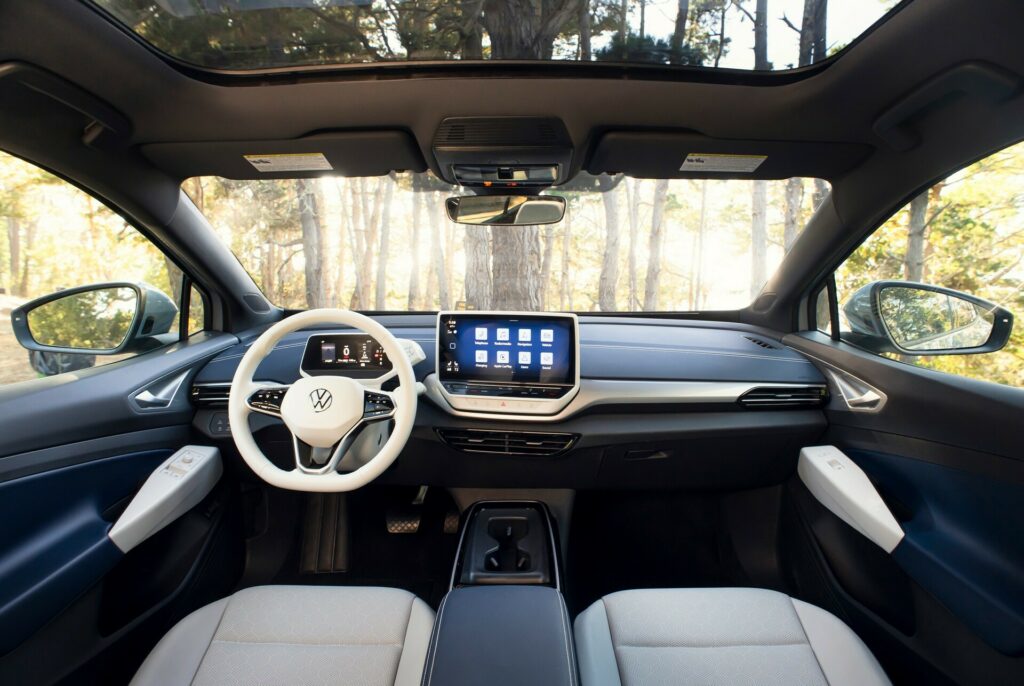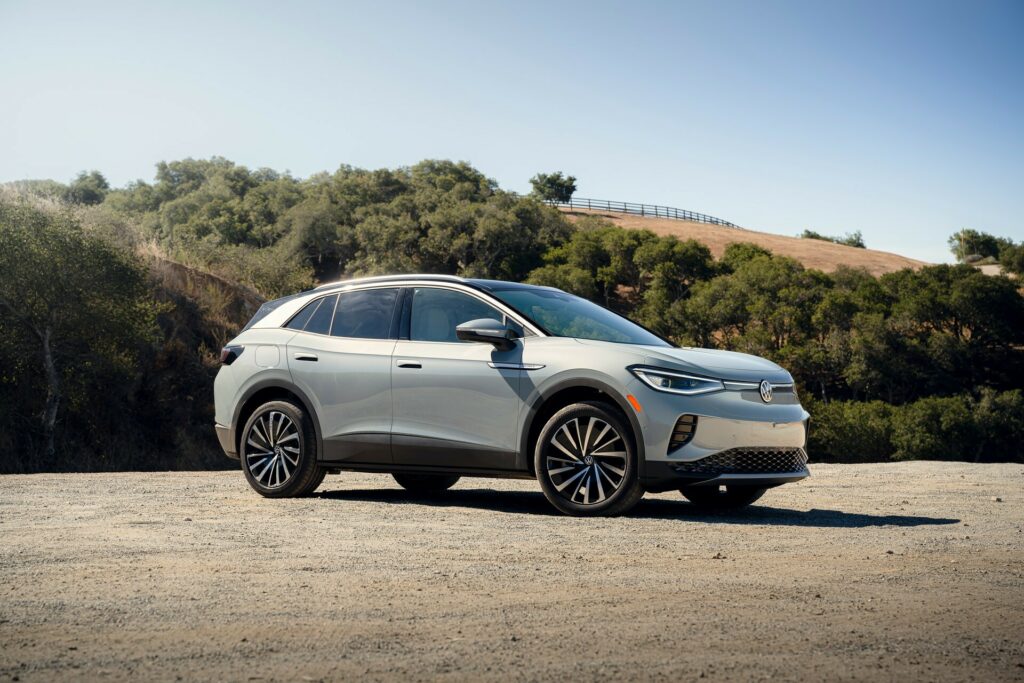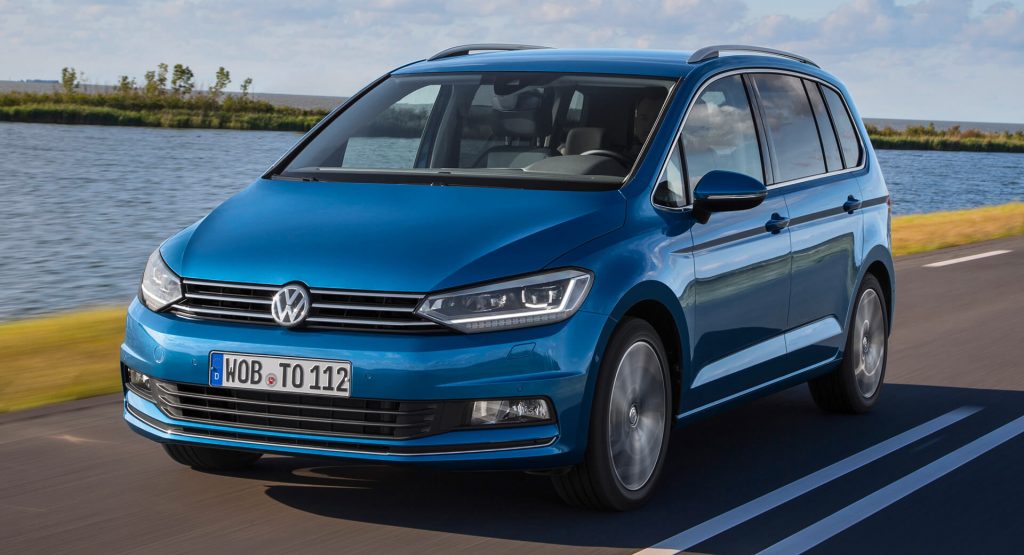VW’s New T-Roc Is Almost Here With A Big Surprise Hidden Inside
- Volkswagen will unveil the next T-Roc at the upcoming Munich Motor Show.
- Leaked prototype images of the new model first appeared online earlier this year.
- The compact SUV will be offered with ICE, hybrid, and fully electric powertrains.
While Western auto shows have largely died since the COVID-19 pandemic, September’s Munich Motor Show remains an important event on the automotive calendar and will host the unveiling of the new VW T-Roc. This second-generation model will be sold with ICE, hybrid, and battery electric powertrains and has just been teased for the first time.
The image released of the T-Roc shows a black prototype covered with bright yellow text. Although it only shows the new model from the side, it’s obvious that this is the same vehicle that leaked images revealed earlier this year.
Read: VW’s Electric T-Roc Will Be Separate From The ICE Version
Those photos showed the new T-Roc with a thoroughly revised front fascia, including a large black grille with honeycomb-shaped cutouts, sharp headlights, and an LED light bar. Plenty of changes have also been made to the rear of the model, including the fitment of new LED taillights.
While the T-Roc may not be sold in the United States, it is a hugely important car for VW in Europe. In fact, it consistently ranks among the top-selling models on the continent, often rivaling the likes of the Golf, Renault Clio, and Dacia Sandero in terms of volume. As such, this new model had better win over customers, or else VW’s European struggles could be compounded.
Expanding The Powertrain Mix
In addition to the combustion models, VW will offer the new T-Roc with a full-hybrid system that will be offered in the Golf and Tiguan too. The setup combines a petrol engine with an electric motor that can power the rear wheels on its own or work together with the engine, operating much like Toyota’s approach where the system can switch between petrol, electric, or a blend of both as needed.
VW chief executive Thomas Schäfer noted that this hybrid variant will be particularly important in South America.
“We needed to do it anyway, because South America has a need for an HEV drivetrain – and the T-Roc is built in South America for South America, and also in China,” he told Autocar. “Interestingly enough, HEV has also become a big theme in the US specifically. It’s a technology that everybody said was not necessary any more, but now with the BEV slowdown in the US, the balance is [moving towards] HEVs.”
Electric Future
The electric version of the T-Roc will be underpinned by VW’s new Scalable Systems Platform (SSP), becoming only the second model to use this architecture. It will bring with it ultra-fast charging and Level 4 autonomous capabilities.





















